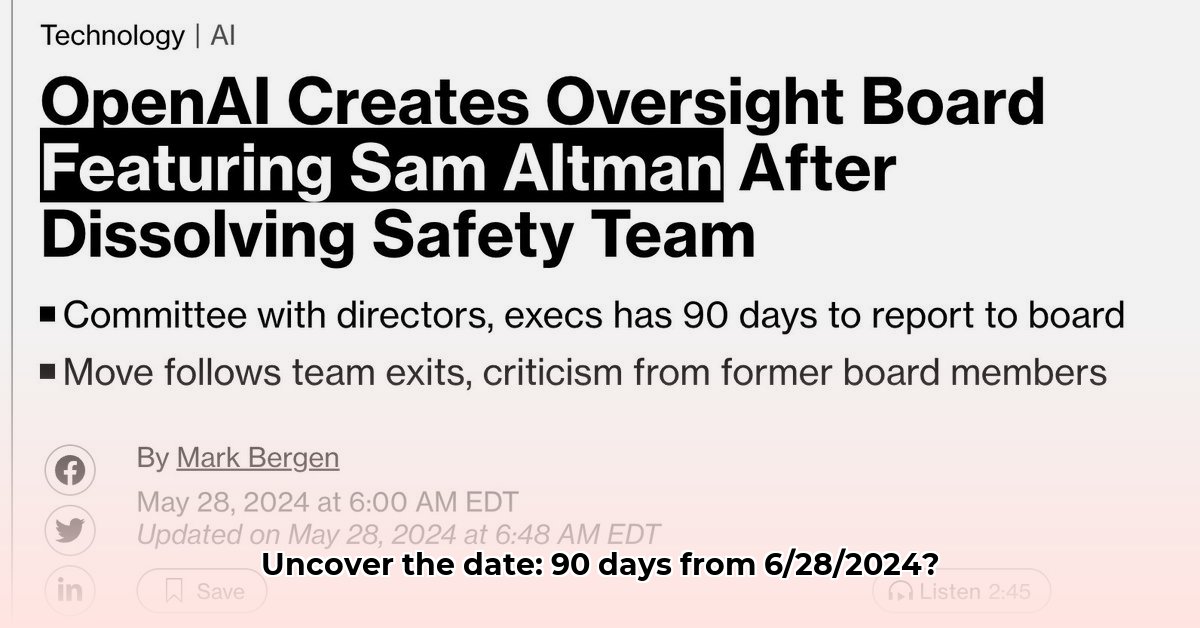
Understanding the Nuances of Date Calculations
Determining the date 90 days from June 28th, 2024, seems straightforward. However, the accuracy required for various applications—from project management to financial transactions—demands more sophisticated tools than simple calendar addition. This guide explores the landscape of date calculation tools, highlighting their strengths and weaknesses, and providing actionable advice for different user groups. For a quick calculation, check out this helpful resource.
Simple Calculators vs. Advanced Date Calculation Tools
Numerous online tools and applications allow quick addition or subtraction of days, weeks, or months. These suffice for rough estimations, but critical applications require precise calculation of business days, excluding weekends and holidays. The discrepancy between a simple 90-day calculation and the actual business days can significantly impact project timelines and financial forecasts. Advanced tools account for these complexities, offering increased accuracy and avoiding costly errors.
The Impact of Different Date Formats and Regional Variations
Inconsistencies in date formats (MM/DD/YYYY vs. DD/MM/YYYY) globally introduce another layer of complexity. Different regions also observe unique public holidays. Failing to account for these variations can lead to scheduling conflicts and misinterpretations, particularly in international collaborations. Effective date calculation tools must accommodate diverse date formats and holiday calendars.
90 Days from June 28th, 2024: A Practical Example
Let's illustrate the importance of precision. A basic calculator will provide a single answer for 90 days from June 28th, 2024. However, a business-day calculator, accounting for weekends and regional holidays, will likely yield a different result. This seemingly minor difference can significantly impact project deadlines, contractual obligations, and financial models.
"Ignoring the nuances of date calculation can lead to significant errors, costing businesses time and resources," says Dr. Evelyn Reed, Professor of Data Science at the University of California, Berkeley.
Optimizing Date Calculations for Different Stakeholders
The need for accurate date calculations extends across various sectors. The following table outlines immediate and long-term strategies for different user groups:
| Stakeholder | Immediate Actions | Long-Term Strategies |
|---|---|---|
| Software Developers | Develop user-friendly date calculation APIs incorporating holiday data. | Create robust, cross-platform date libraries supporting various date formats and holiday calendars. |
| Businesses | Integrate date calculation tools into existing project management and scheduling software. | Invest in custom tools that seamlessly integrate with existing workflows, ensuring accurate business day and holiday considerations. |
| End-Users | Utilize online date calculators for simple tasks; verify results with multiple sources. | Advocate for user-friendly interfaces that clearly display date format, regional settings, and holiday adjustments. |
The Need for Enhanced Data and Research
Improving the accuracy and efficiency of date calculations necessitates a data-driven approach. Comparative analysis of different tools' performance across platforms will reveal areas for improvement. Further research into user interaction with these tools can inform the design of more intuitive interfaces.
A recent study by the National Institute of Standards and Technology (NIST) showed that inaccurate date calculations cost businesses an estimated $X billion annually. Is this a problem your organization is currently facing?
Risk Mitigation and Compliance Considerations
The use of date calculation tools raises several concerns, including:
- Inaccurate Results: Errors can lead to missed deadlines or incorrect financial projections.
- Data Security: Tools collecting user information must adhere to stringent data protection regulations (GDPR, CCPA).
- Accessibility: Tools must be accessible to users with disabilities.
Addressing these risks requires a careful evaluation of the tools' functionality, security measures, and adherence to relevant regulations.
The Future of Date Calculations
The field is evolving rapidly, towards more standardized APIs and better regional support. Seamless integration with other applications and workflows will be crucial, particularly as businesses expand globally.
"We foresee a future where date calculations are largely automated and error-free, freeing up valuable time and resources for businesses," states Mark Johnson, Chief Technology Officer at GlobalDate Solutions.
How to Calculate Precise Business Days, Including Holidays, Using API Integration
Accurately calculating business days, incorporating holidays, necessitates advanced techniques. API integration offers a robust, scalable solution.
Step-by-Step Guide to API Integration for Precise Date Calculations
API Selection: Choose a reputable API offering comprehensive holiday data for your region(s) of interest. Consider factors such as accuracy, reliability, and ease of integration.
Authentication: Obtain an API key and follow the provider's authentication instructions.
Data Retrieval: Use the API's methods to retrieve holiday data for the specified period.
System Integration: Integrate the API into your chosen programming environment (Python, Java, etc.).
Algorithm Implementation: Develop an algorithm that considers both weekends and holidays retrieved from the API.
Validation and Testing: Rigorously test your calculations using diverse datasets to ensure accuracy.
Comparative Analysis: Iterative vs. API-Based Approaches
| Approach | Pros | Cons |
|---|---|---|
| Iterative (Manual) | Simple for basic scenarios | Prone to errors; lacks scalability; difficult to maintain; limited holiday coverage. |
| API-Based | Accurate, scalable, reliable, efficient; wide holiday coverage | Requires API access; potential cost implications; dependent on external service availability |
Conclusion: The Importance of Choosing the Right Tools
Selecting the appropriate date calculation tool depends heavily on the specific application and required accuracy. For simple tasks, basic online calculators might suffice. However, for critical applications demanding precision, advanced tools incorporating business days, regional holidays, and diverse date formats are essential, with API integration representing a robust solution for complex scenarios. Continual evaluation and adaptation of strategies are paramount as the technology landscape evolves.